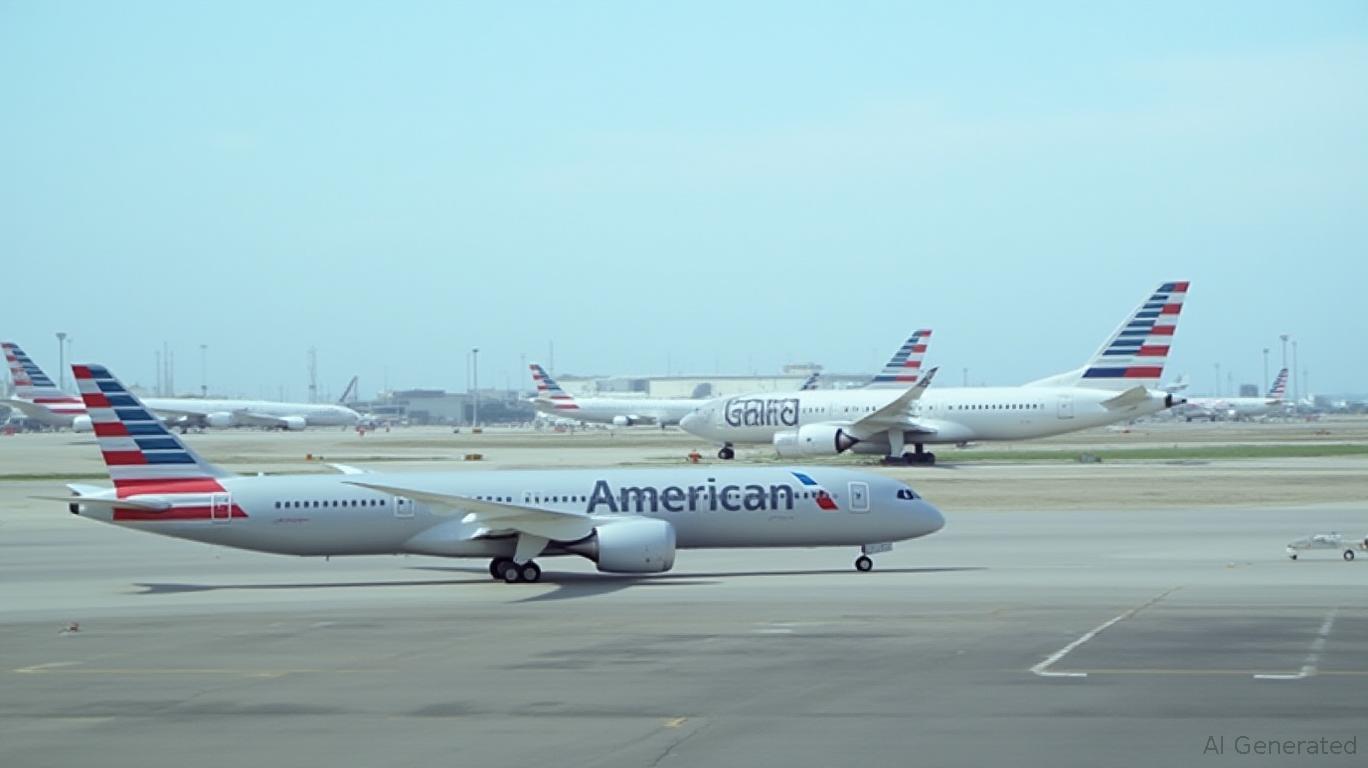Navigating the Storm: Operational Resilience and the Case for Airlines in a Post-Crisis World
The recent series of
787 diversion incidents involving American Airlines (AAL) in 2025 has laid bare the delicate balance between operational efficiency and the unpredictability of global travel. While these events underscore vulnerabilities in fleet management and infrastructure compatibility, they also reveal a deeper truth: airlines that can adapt to crises with agility—and those positioned to capitalize on pent-up demand—are poised to thrive in a sector still recovering from pandemic disruptions. This article explores how American Airlines' handling of its 787 crisis reflects both systemic challenges and opportunities for investors in airlines with robust contingency plans and exposure to high-demand routes.The Crisis: A Confluence of Operational and Infrastructure Flaws
The diversion of two Boeing 787 variants—the 787-8 and 787-9—exposed critical weaknesses in American Airlines' operational framework. Between January and June 2025, five diversion incidents occurred, including a high-profile reroute of a 787-9 from Naples to Rome due to the Naples airport's inability to accommodate its Category 9 RFFS requirements (Figure 1). This incident highlighted a glaring oversight in fleet management software, which failed to flag Naples' infrastructure limitations.

The January–February 2025 series of diversions involving a 787-8 (N819AN) further revealed recurring mechanical issues—flap malfunctions, hydraulic leaks—and inadequate maintenance protocols. These incidents, coupled with Boeing's delayed 787 deliveries, forced American to suspend six transatlantic routes, including key hubs like New York–Paris and Dallas–Frankfurt.
The Bigger Picture: Demand Outpaces Supply, but Risks Remain
The airline sector's recovery since 2020 has been uneven, with demand surging faster than supply. Post-pandemic travel rebounded sharply, yet capacity constraints—due to grounded aircraft, pilot shortages, and infrastructure bottlenecks—have created fertile ground for airlines capable of managing disruptions. American Airlines' challenges, however, serve as a cautionary tale.
Key vulnerabilities revealed by the 787 crisis:
1. Fleet Management Software Gaps: The Naples incident demonstrated that dispatch systems must integrate real-time airport data (e.g., RFFS categories) to prevent incompatible aircraft assignments.
2. Supply Chain Reliance: Boeing's delays in delivering 787-9s forced American to cut routes, illustrating how manufacturers' bottlenecks can destabilize airlines' operations.
3. Passenger Experience Risks: Diverted passengers faced logistical nightmares—2.5-hour bus rides from Rome to Naples, for instance—undermining brand loyalty.
Investment Thesis: Select for Resilience and Strategic Assets
While American Airlines' operational missteps are concerning, the sector's long-term fundamentals remain strong. Airlines with three key attributes are likely to outperform:
- Robust Contingency Plans:
- Airlines with interchangeable aircraft fleets (e.g., Airbus A350 and Boeing 787 variants) and advanced scheduling software can mitigate infrastructure mismatches.
Example: Delta Air Lines' (DAL) fleet diversity and proactive software updates have reduced similar risks.
Exposure to High-Demand Routes:
Markets like transatlantic luxury travel, Asia-Pacific connectivity, and domestic leisure hubs (e.g., Hawaii) remain underserved due to capacity constraints. Airlines with strong route networks, such as Lufthansa (LHA) or Cathay Pacific (0293.HK), benefit disproportionately.
Strategic Infrastructure Partnerships:
- Airlines collaborating with airports to upgrade firefighting capabilities or expand gate capacity (e.g., Singapore Airlines' partnerships in Southeast Asia) can preempt crises like Naples'.
American Airlines: Room for Improvement, but Potential Remains
American Airlines' stock has rebounded since 2020, but its 2025 crises underscore the need for operational overhauls (Figure 2). Investors should demand clear progress in:
- Upgrading fleet management software to flag airport restrictions.
- Reducing reliance on single-variant fleets (e.g., prioritizing 787-8s for smaller airports).
- Strengthening maintenance protocols to address recurring technical issues.
However, the airline's dominance in U.S. domestic travel and its exposure to high-demand routes like London and Hawaii position it to recover—if it can address its vulnerabilities.
Conclusion: Crises Create Opportunities for the Prepared
The 787 diversion saga is a reminder that airlines must balance ambition with operational rigor. For investors, the sector's post-pandemic rebound is undeniable, but selective bets are critical. Focus on airlines that:
- Prioritize software-driven contingency planning.
- Hold exclusive rights to high-margin routes.
- Partner with airports to future-proof infrastructure.
American Airlines' setbacks highlight risks, but they also frame the path forward. In a world where demand for travel continues to outpace supply, resilience is the ultimate competitive advantage.
Investment Action: Consider overweighting airlines with strong contingency frameworks and route dominance while underweighting those—like AAL—still resolving operational flaws. Monitor Boeing's 787 delivery timeline as a key catalyst for sector recovery.
Note: Always conduct due diligence and consult with a financial advisor before making investment decisions.

Comments
No comments yet